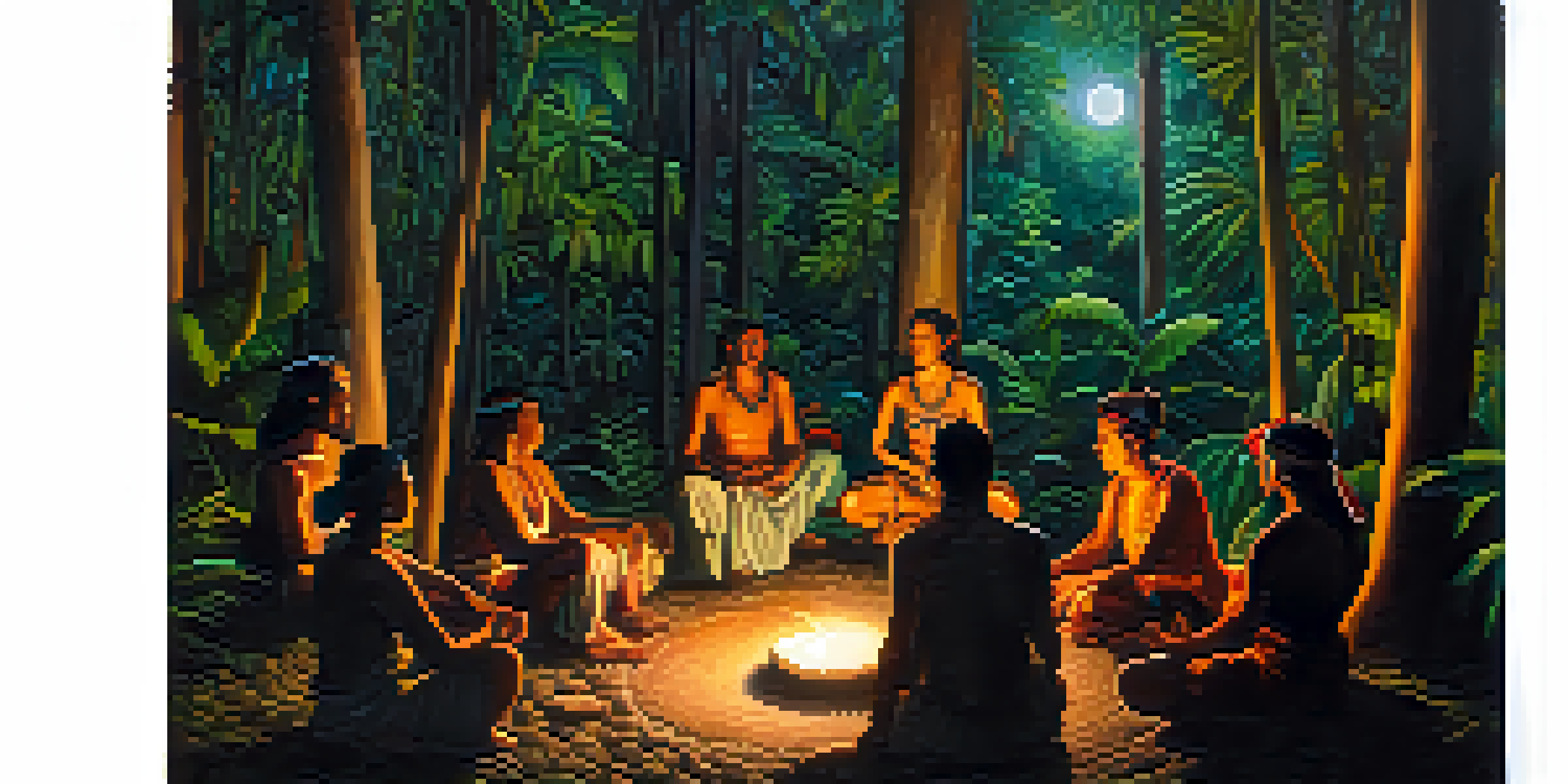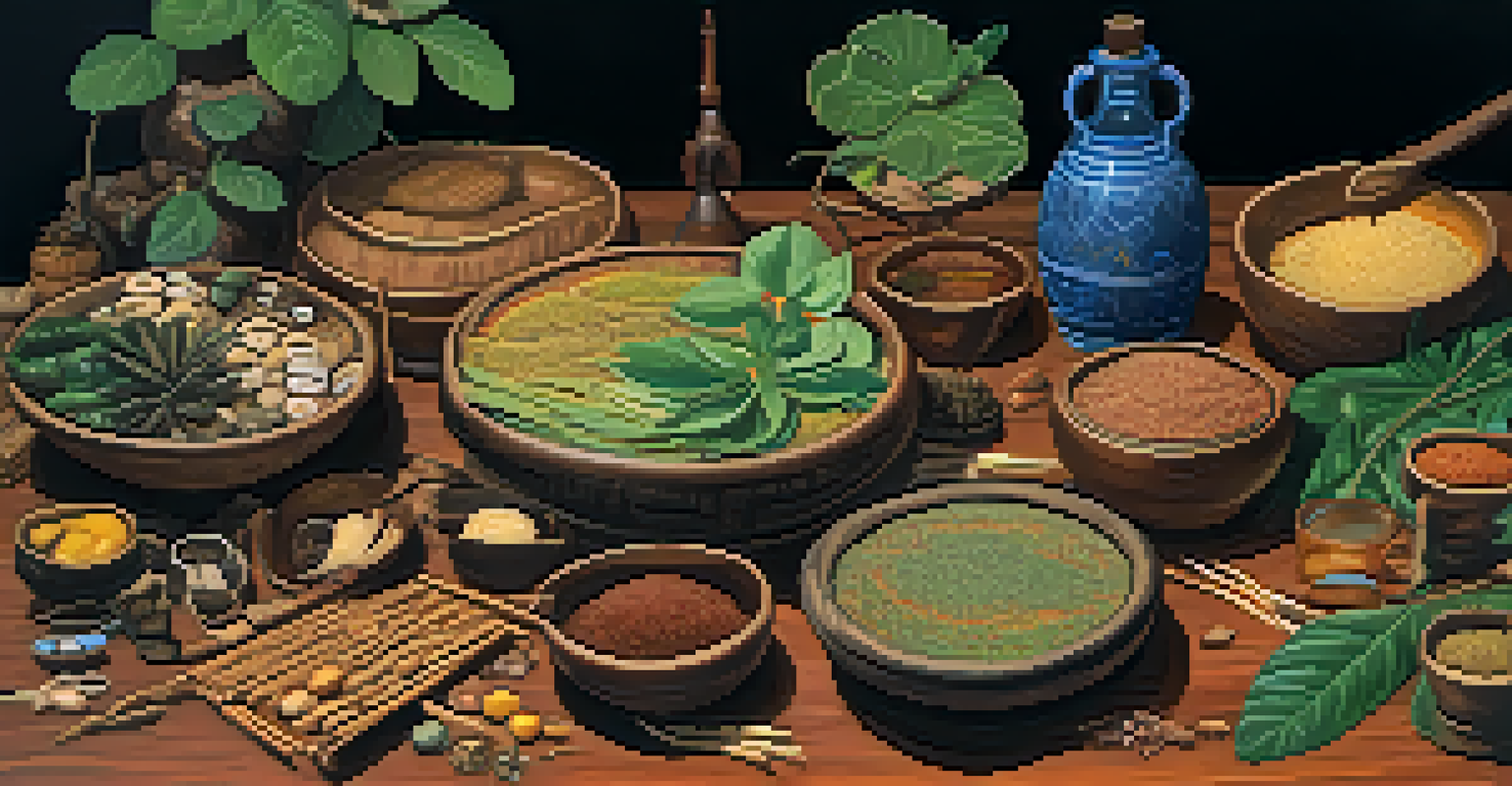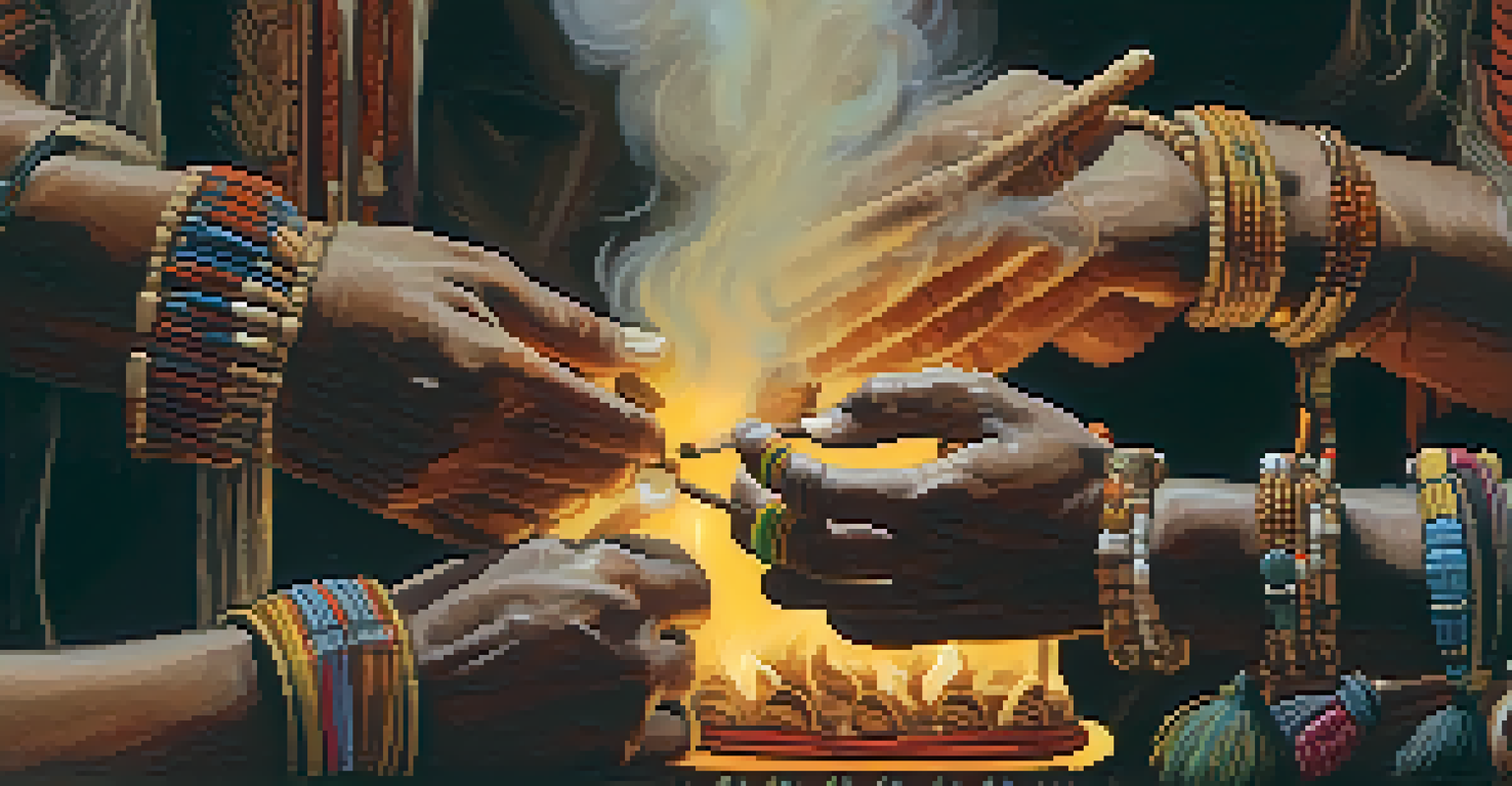The Evolution of Ayahuasca Use in Indigenous Rituals

Understanding Ayahuasca: A Sacred Brew
Ayahuasca, a traditional Amazonian brew, is made from the Banisteriopsis caapi vine and other plants. This potent mixture has been used for centuries by indigenous tribes for spiritual and healing purposes. The brew's psychoactive properties are primarily attributed to DMT, a compound that induces vivid visions and deep introspection during ceremonies.
Ayahuasca is a tool for personal growth and healing, rather than a recreational substance.
For many indigenous cultures, Ayahuasca is more than just a drink; it's a sacred tool for connecting with the spiritual realm. Shamans, or spiritual leaders, guide participants through these intense experiences, helping them navigate the often overwhelming sensations and insights that arise. This connection to spirituality is a cornerstone of indigenous identity and cultural practices.
As awareness of Ayahuasca has spread globally, it has sparked interest in its therapeutic potential, leading to a new wave of participants seeking healing or enlightenment. However, it's important to respect its origins and the traditions surrounding its use, as appropriation can dilute its significance in indigenous cultures.
The Role of Shamans in Ayahuasca Rituals
Shamans play a crucial role in the Ayahuasca experience, acting as intermediaries between the physical and spiritual worlds. They are trained through years of apprenticeship, learning the songs, prayers, and rituals that enhance the brew's effects. Their deep understanding of the plants and their spiritual implications adds a layer of authenticity to the ceremonies.

Through their guidance, shamans create a safe and supportive environment for participants. This is essential, as Ayahuasca often brings up challenging emotions and memories. The shaman’s role is to navigate these complexities, ensuring that the journey is both healing and transformative.
Ayahuasca's Cultural Significance
Ayahuasca serves as a vital aspect of cultural identity for indigenous communities, intertwining with their cosmology and social structures.
In many cases, shamans also help participants integrate their experiences after the ceremony. This integration is vital for understanding the insights gained during the ceremony and applying them to everyday life, reinforcing the idea that Ayahuasca is a tool for personal growth and healing, rather than a recreational substance.
Rituals and Ceremonies Surrounding Ayahuasca
Ayahuasca ceremonies are deeply ritualistic and can vary significantly between different indigenous cultures. Typically conducted at night, these ceremonies are often held in a sacred space, adorned with symbols and offerings that honor the spirits. The atmosphere is charged with intent, creating a powerful setting for the transformative experiences that participants will undergo.
The evolution of Ayahuasca use in indigenous rituals will depend on mutual respect and understanding.
During the ceremony, participants often engage in singing or chanting, known as 'icaros,' which are songs that invoke spiritual assistance and guidance. These songs are integral to the experience, helping to direct the energy in the room and support participants as they journey inward. The combination of music, intention, and the effects of Ayahuasca creates a unique environment for healing.
Moreover, rituals may include cleansing practices, such as the use of tobacco or other herbs, to prepare participants energetically for the experience. This holistic approach emphasizes the interconnectedness of body, mind, and spirit, reinforcing the belief that healing is a multifaceted journey.
Cultural Significance of Ayahuasca in Indigenous Communities
For many indigenous communities, Ayahuasca is not only a means of healing but also a vital aspect of their cultural identity. The rituals surrounding its use are often interwoven with their cosmology, history, and social structures. This deep-rooted significance helps to maintain cultural continuity amid external pressures and globalization.
The ceremonies serve as communal gatherings, fostering a sense of belonging and shared purpose among participants. In these spaces, individuals can express their struggles and triumphs, supported by the collective energy of the group. This communal aspect is essential in reinforcing social bonds and cultural values.
Role of Shamans in Ceremonies
Shamans are essential guides during Ayahuasca ceremonies, providing support and facilitating healing through their deep understanding of the brew and its spiritual implications.
As these indigenous cultures face challenges from modern society, the preservation of Ayahuasca rituals becomes even more crucial. Efforts to document and revitalize these traditions are underway, ensuring that future generations can experience and uphold the cultural significance of Ayahuasca.
The Impact of Western Interest in Ayahuasca
In recent years, there has been a growing interest in Ayahuasca among Western audiences, often fueled by reports of its therapeutic benefits. This surge in popularity has led to a host of retreats and ceremonies being organized outside indigenous contexts, which raises important questions about cultural appropriation and the ethical implications of such practices.
While some individuals genuinely seek healing and connection, others may approach Ayahuasca as a mere novelty or adventure. This can result in a misunderstanding of its significance, potentially undermining the spiritual and cultural dimensions that are integral to its traditional use. The commodification of Ayahuasca raises concerns about its impact on indigenous rights and traditions.
Moreover, the influx of Westerners can strain local resources and alter traditional practices. It’s essential for participants to approach Ayahuasca with respect and an understanding of its origins, ensuring that their journey honors the cultures that have safeguarded this sacred brew for generations.
Modern Adaptations and Innovations in Ayahuasca Use
As Ayahuasca gains popularity, modern adaptations of its use are emerging, reflecting the diverse needs of contemporary seekers. Some practitioners are blending traditional practices with modern therapeutic approaches, integrating psychological insights into the ceremonial framework. This fusion aims to enhance the healing potential while respecting the roots of the tradition.
Innovations also include the development of Ayahuasca-inspired community programs that focus on healing trauma and fostering resilience. These initiatives often combine elements of group therapy with traditional rituals, creating a holistic approach to mental health and well-being. By bridging ancient wisdom with modern psychology, these programs cater to a broader audience.
Western Interest and Ethical Concerns
The growing Western interest in Ayahuasca raises important ethical questions about cultural appropriation and the impact on indigenous practices.
However, it's crucial to maintain a dialogue with indigenous communities to ensure that these adaptations do not distort or commercialize their practices. Collaboration and respect are vital to honor the legacy of Ayahuasca while allowing it to evolve in ways that are meaningful for all.
The Future of Ayahuasca Use in Indigenous Rituals
Looking ahead, the future of Ayahuasca in indigenous rituals is both promising and precarious. As global interest continues to grow, there is potential for indigenous communities to share their wisdom and traditions on their terms. This could lead to greater recognition of their rights and cultural practices, fostering a respectful exchange between cultures.
At the same time, the challenge of preserving authenticity amid commercialization looms large. It’s essential for indigenous leaders to assert their voices in conversations about Ayahuasca's use, ensuring that their traditions remain intact and meaningful. This balance between sharing and safeguarding their cultural heritage is crucial for future generations.

Ultimately, the evolution of Ayahuasca use in indigenous rituals will depend on mutual respect and understanding. By honoring the profound connection these communities have with the brew, we can appreciate Ayahuasca not just as a substance but as a powerful symbol of cultural identity, healing, and spiritual exploration.